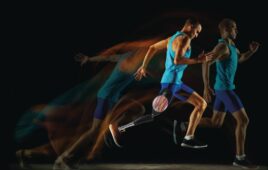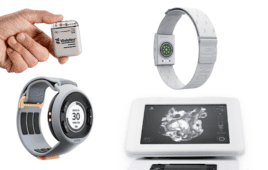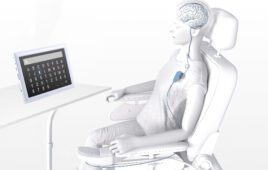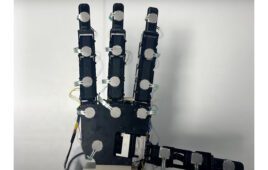Researchers at Caltech’s Amber Lab are practicing tripping robots in order to better understand how robots move, and applying this to devices that help people with walking difficulties.
The researchers use a five-foot, semihumanoid robot named Amber that walks on a treadmill with a rope attached to a railing. The bot can only fall forward or backwards, but surprisingly, when she loses her footing and stumbles, she easily recovers and continues walking at the same pace. Even when shoved in the torso by the long metal pole, the robot recovers.
Although this process seems cruel, it’s what the researchers call disturbance testing, and is part of the process of understanding how robots walk. This research then directly translates to devices, such as exoskeletons and prosthetics, which can help people walk.
“Every time we achieve a behavior like walking or running, we’d like to put that on a prosthetic device and ultimately an exoskeleton for a paraplegic,” says Dr. Aaron D. Ames, Bren professor of mechanical and civil engineering at Caltech who leads the Amber Lab. “We would like to have [a paraplegic] get up and walk with the same kind of algorithms that we’re using on our walking robots.”
Ames and his team want to understand the mathematics of locomotion. If the robot falls, they don’t just want to adjust settings to get the bot up and running again.
“We come back to the basic science and then iterate through the math and the algorithms to try it again,” he says.
The robots at the Caltech lab use electric motors, rather than hydraulics. This gives the bots subtle actuations that make them more suited to be used as assistive devices.
One prosthetic developed at the lab is known as Ampro 3, and is a powered prosthesis located above the knee with two degrees of freedom at the ankle. It’s designed to help people walk better. An inertial measurement unit modulates the movement of the synthetic leg, which is based on how fast the user is walking. This means Ampro always maintains pace with the wearer.
Ultimately, the researchers hope to create robotic devices that can navigate an array of different terrains, making them fitted for a person’s diverse lifestyle.
“It’s that idea of getting robots into doing things that are sort of at the apex of human capability, whether it’s handling different terrain, or moving very quickly,” says Ames. “Those are kind of the two fronts, I think, as a robotic community we are shooting for.”
Although some are skeptic about using robots in everyday life, Ames says their ultimate goal is to make life easier.
“They’re not the scary Terminator,” says Ames. “They’re actually there to make our lives better.”




